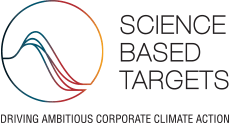 There is another transformative debate taking place in London this week. Despite being overshadowed by the Brexit, some of the world’s business leaders, economists, experts and diplomats have gathered at the Business & Climate Summit (June 28-29) to discuss the role companies should be playing to mitigate climate change.
There is another transformative debate taking place in London this week. Despite being overshadowed by the Brexit, some of the world’s business leaders, economists, experts and diplomats have gathered at the Business & Climate Summit (June 28-29) to discuss the role companies should be playing to mitigate climate change.
The time is now
Quantis CEO is among these transformative leaders discussing how to parlay COP21 activism and commitments into solid momentum and action for business. The key take-away after day 1 is that the transition to a low-carbon and resilient economy is happening – now! Businesses need to act swiftly, make decisions and set sustainable goals to be reached within the next 40, 50 years. It’s time to act. The clock is ticking.
The rules of the game have changed
Science-based goal setting is an approach that aligns a business’ sustainability strategy with objective science. Moreover, it is a paradigm shift in the way that companies set goals as part of a new framework to create resilience in a sustainable world.
A science-based target is aligned with keeping global temperatures under a 2°C scenario. To this end, the Science Based Targets initiative (SBT) was created by a partnership of global organizations CDP, UN Global Compact, WRI and WWF with the objective of helping companies determine how much they must cut greenhouse gas emissions to prevent a worst-case scenario.
Here’s a before-and-now look at how the goal setting game has evolved in the science-based era.
Measurement: towards Scope 3
Before: Companies implemented product footprinting initiatives or corporate environmental assessments that looked at direct emissions, or Scope 1 and 2.
Now: A Scope 3 assessment, including the full supply chain and use of products, is necessary to ensure that a sustainability strategy is aligned with global environmental challenges and climate science. WRI teamed up with Quantis to develop the Scope 3 Evaluator to get companies started. You can also read this article from our friend Cynthia Cummis at WRI on the business case for SBT, which focuses on GHG measurement.
Define & Commit
Before: Goals were put into place to define and track environmental performance. Many companies set goals based on a combination of what was seen as feasible, but also sounded big enough to be recognized as meaningful improvement, for example to cut GHG emissions by 20% by 2020. These short-term goals are missing the context: Are the goals “good enough” to achieve the necessary change?
Now: The feasibility of goals has a new twist: What can our planet support? Science-based goals are now being set by looking at the global context around issues like climate and identifying what amount of change needs to happen in one company’s value chain for them to be playing an adequate part in effecting that global change. This permits companies to operate with a long-term, big-picture approach and allows them to identify and act on larger systemic issues on which they might not see measurable outcomes in the near-term, but which are needed to achieve sufficient change in the long run.
 Leaders are committing to set SBTs. To date, 168 companies have signed up and the initiative is gaining momentum. A company must implement a full corporate footprint and assess the appropriateness of the climate commitments made.
Leaders are committing to set SBTs. To date, 168 companies have signed up and the initiative is gaining momentum. A company must implement a full corporate footprint and assess the appropriateness of the climate commitments made.
At the summit this week, CDP and the We Mean Business Coalition launched a report, “The Business End of Climate Change that addresses 5 business commitments. One of the commitments includes setting SBTs and forecasts that “2,000 companies will be setting Science-Based Targets by 2030”.
Report & Communicate
Before: Organizations publish sustainability reports or communications that outline GHG reduction goals, which is an essential objective to running a cleaner business. In terms of reporting, however, most companies are still mainly considering Scope 1 and 2.
Now: Disclosure should include the full value chain and SBTs. CDP allocates points for setting an SBT. In order to do so, a company must know the relative importance of their Scope 3 target compared to their total Scope 1,2 and 3.
Reaching Goals
Before: Incremental goals were set and small-scale projects were implemented. Any carbon reduction progress was deemed a success.
Now: Goals are set based on climate science and are fully embedded in business objectives. The questions to answer are: Is our progress sufficient? Are we, as a business, doing our share to mitigate the effects of climate change?
With Quantis
Quantis works with companies around the world to understand this complex topics and to set science based goals. Our team leads awareness-raising workshops on science-based goal setting and planetary boundaries and we also guide companies seeking to align their sustainability strategy with this new approach, or to define long-term goals and operational action plans.
To learn more about the new era in goal setting and listen to how Mars and Intel are changing their approach, listen to our webinar “Setting our sights on a sustainable world: How to create science-based goals” or read this article “Supercharging Sustainability Metrics with Science”.
Contact Quantis’ Charlotte Bande to learn more about how we can help your company measure, define, report and reach science-based goals.
